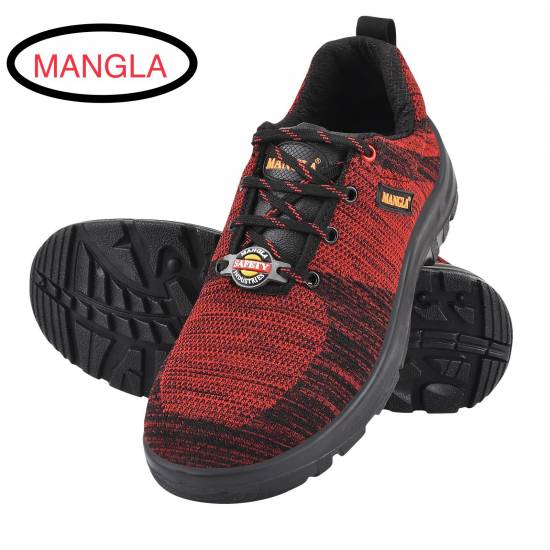- Home
- Company Profile
-
Our Products
-
Gumboots
- Safety Gumboot
- Industrial Safety Gumboot
- Pvc Gumboot
- Wellington Boot
- Mining Gumboot
- Knee Boot
- Half Gumboot
- Long Gumboot
- Polyvinyl Chloride Industrial Gumboot
- Composite Toe Cap Gumboot
- Steel Cap Gumboots
- Injection Moulded Gumboot
- Waterproof Gumboot
- Double Colour Gumboot
- Winter Gumboots
- Construction Gumboot
- Work Gumboots
- Single Moulded Gumboot
- Lining Gumboots
- Coal Mining Gumboot
- IS 12254 2021 Marked Gumboot
- IS 15298 Part-2 Marked Gumboot
- Duck Boot
- Snow Gumboot
- Reach Gumboot
- Full Gumboot
- Direct Injection Moulded Shoes
- Fancy Gumboot
- Rain Boot
- Rubber Gumboots
-
Leather Safety Shoes With PU Sole
- Industrial Safety Shoes
- PU Safety Shoes
- Leather Shoe With Steel Toe
- Waterproof Leather Work Boots
- Black Leather Safety Shoes
- Men's Leather Safety Shoes
- Ladies Leather Safety Shoes
- Ladies Safety Shoes
- Mining Safety Shoes
- Leather Upper Safety Shoe
- Ankle Leather Safety Shoes
- Leather Derby Shoes
- Penetration Mid Sole Safety Shoe
- Double Colour Safety Shoes
- Single Density Safety Shoe
- Dual Density Safety Shoes
- Steel toe Shoes
- Knee Safety Shoe
- Electrical Safety Shoe
- Safety Wear Shoes
- Direct Moulded PU Safety Shoe
- High Ankle Safety Shoes
- Welding Safety Shoes
- Antistatic Safety Shoes
- Work Boot
- Ladies Rigger Boots
- Men Safety Shoes
- Officer Safety Shoes
- Composite Safety Shoes
- Ladies Safety Boots
- Casual Safety Shoes
- Sneaker Safety Shoes
- Flyknit Safety Shoes
- Fiber Toe Cap Safety Shoes
-
Leather Safety Shoe with Rubber Sole
- Rubber Safety Shoe
- Nitrile Rubber Safety Shoes
- Leather Safety Shoe With Natural Rubber Sole
- Leather Safety Shoe With Nitrile Rubber Sole
- Derby Shoe With Rubber Sole
- Heat and Oil Resistant Safety Shoe
- Vulcanized Safety Shoe
- DVP Moulded Shoe
- DMS Boot
- Welding Boot
- Conductive Safety Shoes
- Heat Resistant Safety Shoes
- Leather Safety Shoe with PVC Sole
- Synthetic Leather with PVC Shoes
- Jungle Boot
- Ankle Boot
- Safety Rubber Canvas Boot
- PVC Sole Safety Shoes
- Sporty Look Safety Shoes
-
Gumboots
- Our Certification
- Photo Gallery
- Blogs
- Contact Us
- Home
- The Benefits Of Wearing Safety Shoes
The Benefits Of Wearing Safety Shoes

Heavy-duty footwear, such as steel toe boots, may come to mind when considering work shoes. Many industrial and construction locations require these boots, which have reinforced toes to protect the feet from hazards such as large items.
Steel toe boots aren't the only type of footwear that may make work safer. Traction, arch support, and other safety features can be found in other types of boots and shoes. To identify the best foot protection for your employees' jobs, conduct a hazard assessment and evaluate which risks, such as slipping and falling or sharp items, represent a threat to their feet. Then choose shoes or boots that provide adequate protection.
Shoes may not appear to be as important for workplace safety as protective glasses or gloves, but they do have a number of advantages. If someone in your business is sceptical about the value of investing in footwear, demonstrate how safety shoes can keep employees safe.
Safety Shoes Have the Following Functions:
Foot injuries can be serious, necessitating time away from work or making duties difficult to complete. Many foot injuries can be avoided by wearing safety shoes or boots in the following ways.
- Prevent Falling and Flying Objects: Falling and flying objects are regular risks for employees carrying large materials or working in dynamic environments where numerous people, machines, and vehicles are functioning at the same time. Steel toe boots and other protective footwear can successfully avoid crushing injuries to the feet.
- Prevent Punctures: When employees are at risk of stepping on sharp things or being struck by sharp objects from above, heavy-duty soles and thick materials around the foot provide the best protection. Many sharp things, for example, could be in someone's path at a building site. A shoe with a soft sole may not be enough protection.
- Prevent Cutting Hazards: Sharp machinery or machinery with moving parts can cause cutting injuries. For Example, Workers in the logging industry are at risk from chainsaws. If a chainsaw comes into contact with someone's foot, the consequences could be disastrous.
- Avoid Electrical Hazards: Electricity in the workplace can cause a range of problems. Workers may be exposed to electric shocks or accumulate static energy, which can result in electric sparks in some situations. Non-conductive footwear consisting of leather, rubber, or other non-conducting materials can be worn to lessen the risk of an electrical mishap. Anti-static or conductive footwear can be worn in places where static build-up on the body is a risk.














